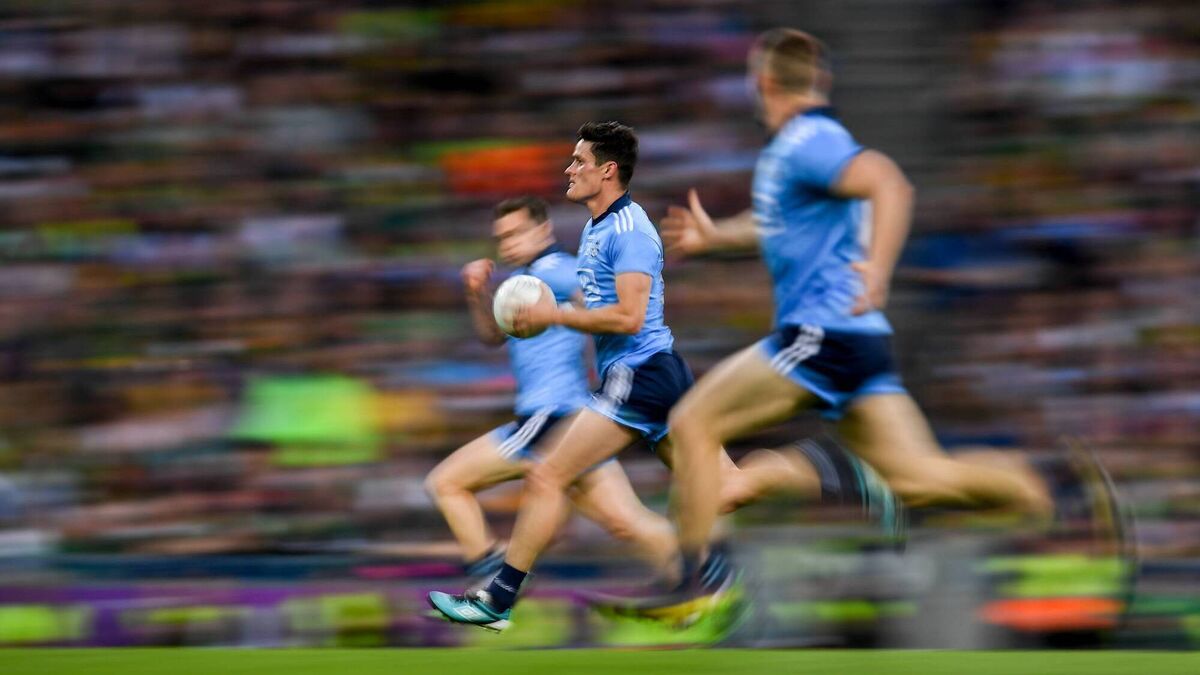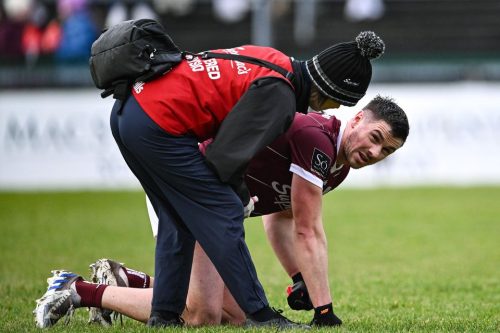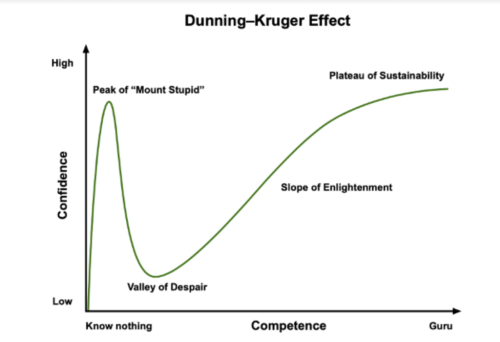
Kaizen in Everything. But Why?
“The only true test of intelligence is if you get what you want out of life.” – Naval Ravikant
Speed is king.
Playing fast is what separates the elite performers from the average.
Going fast is what separates the elite athletes from the sub-elite.
If you want to play fast, then it’s going to be useful for your body to be able to keep up with your mind.
We can work on the cognitive processes of decision-making, as well as the speed of technical execution and perception of tactical requirements, but ultimately we are depending on the body to be able to keep up with play. If we are unable to reach the outputs necessary to keep up from a physical perspective, then it’s going to be pretty difficult to get in front of our opponent, find the space first and ultimately achieve success.
So, almost every S&C coach in the country is now fixing their focus away from the weight-room, maximal strength and robustness, and firmly fixing their attention to the field of play and maximal speed exposure (or at least they think they are).
The trouble is, not many know how much sprint volume is enough, how to progress intensity, how to more closely relate it to the game, how to drive intent and how to facilitate a number of athletes in the same session. So, what I’m going to go through today, is my own approach to training speed in a team-sport environment, the principles I adhere to and the reasons I think about things the way I do.
Please try to understand that just because this works in my environment, doesn’t mean it will work in every environment. And also that there needs to be room for individualisation, versatility and adaptability in what is an extremely dynamic team-sport environment. However, from my experience, if you attempt to adhere to the principles that I go through here, I believe you’ll be well on your way to having your athletes moving faster than they are now.
Before we are to stress our athletes in terms of increasing their sprint volume, we must attempt to prepare them to do so. We hope to prepare them from both a physical and psychological perspective by using constraints, drills & cues that help them to understand the relevant KPI’s of elite performers in relation to posture, positions, timing & movements.
We also begin with more extensive means of training in order to prepare the tissues to tolerate the high forces associated with maximal velocity sprinting & acceleration. These days, most team-sports athletes will be exposed to some level of concurrent strength training, with the goals of improving their ability to generate high forces (maximal outputs) & generate them quickly (Rate of Force Development).
Both of these qualities ultimately have the same goal of preparing the athlete to play the sport quicker, jump higher, tackle harder and sprint faster. However, if we are to develop the qualities specific to the sport on the field, we must also be prepared to train at higher intensities than before. In relation to improving tissue tolerance, we may in fact implement both plyometrics & resisted-sprinting into our program with the goals of improving our movement quality, tendon elasticity and tissue capacity.
It is common practice for many GAA teams to spend the early weeks of pre-season solely in the gym. I believe that this is a big mistake and puts the athletes under more time pressure to adapt to the demands on the field of play before the first round of the league, when they do finally return to the pitch. Regardless of traditions, I will begin some level of on-feet training in week 1 of pre-season, in order to prepare the athletes for what’s to come down the line. That might mean we will do a variety of extensive plyometrics, running mechanics drills & shorter exposures to accelerations in order to prepare them for the more demanding training that’s to come.
When deciding upon plyometric variations, I will always consider the various planes that the athletes will move in during the sport. But early on, when I’m solely focused on improving tolerance, timing and reactivity, I may implement the ALTIS rudiment hops series, along with a couple of other variations, in order to nail the basics and remain consistent week to week in my level of progression.
From a running mechanics drills perspective, I will select the appropriate drills based on the group that I have in front of me. I see a lot of coaches that just throw out the same old drills with no end goal in mind. However, I will always select drills that challenge the athlete from a learning perspective. Ones that they are not yet unconsciously competent at executing. I want my athletes to fail at least some of the time. If you’re just programming A-Skips, B-Skips and Ankling week to week, then you may be missing out on an available opportunity for learning.
What these drills also provide, is the opportunity to ingrain the common characteristics of elite performance in the athlete’s mind. This usually comes back to Jonas Doodoo’s 3 key principles of Switching, Projection and Reactivity, but I may also use principles of a stacked ribs & pelvis from work published by ALTIS.
In gaelic games, from what I see with the groups that I work with and research on the demands of the sport, acceleration plays a key role (Doran et al. 2003). So, I tend to place heavy emphasis on the importance of switching in our training. Most gaelic football teams that I’ve worked with also tend to move with a high degree of backside mechanics. The sport and the running volumes associated with it (Malone et al. 2017) also point to a high risk of hamstring injury (Roe et al. 2018)(Murphy et al. 2012).
So, I also place high importance on teaching my athletes how to run with a stacked ribs and pelvis, reducing the amount of anterior pelvic tilt during sprinting. And in order to do that I may emphasise the importance of learning to sprint using more frontside mechanics.
In order to achieve this movement outcome I may use cues, drills or constraints at different stages of the process. Early on, when the focus is on understanding, I may use more cues than constraints. I may question the athletes and open a dialogue around effective mechanics to drive engagement. As we transition through the process, I will use the same cues and coaching points from our drills in our linear accelerations and maximal sprints, further ingraining them in my athletes’ minds.
Finally, I may implement the use of constraints such as sleds, wickets, bands, dowels and med balls to achieve a desired movement outcome or place more emphasis on a desired movement strategy. However, I will usually pair the use of constraints with the use of relevant cues to make the process a conscious one.
When implementing a speed training program with team-sport athletes, I will always use a short-long approach, similar to that used in track and field (Haugen et al. 2019). This is because I am more focused on movement quality than quantity. I will begin by focusing on accelerations over shorter distances, before transitioning to moderate distances and then finally longer distances than the athletes will commonly sprint in a game.
We will attempt to improve and master acceleration technique first, sprinting distances in a range of 10-30m per effort, progressing week by week and session by session. I will also make sure that the total sprint volume for the session does not exceed ~150-200m. However, if using a more aggressive approach you may be able to go closer to 200-300m. (Haugen et al. 2019) My theory is that with athletes in GAA, who typically don’t have the same familiarity or training age with speed training, more can be achieved with less.
We then may progress to longer distances, of 40-50m, emphasising the importance of reaching a higher maximal sprint speed, rather than rate of acceleration. When focusing on these distances, we will speak about max speed mechanics and positions, which differ greatly from those of acceleration. We may also focus on the transition from acceleration into max speed and how we hold our max speed for longer.
Finally, once I’m happy with how the athletes have progressed, I may finally sprint them over distances as great as 60m. We may cover this distance in a variety of ways, depending on the goal of the session. Slow accelerations, flying sprints, relaxed sprinting drills and drills focused on frequency (bleeding drills) may all be used depending on the athlete’s needs.
In the past, S&C coaches may have believed that training had to be incredibly specific to the demands of the game and I still speak with many athletes and coaches that only sprint distances that they will typically cover in the game (GAA = ~15-20m) (Egan et al. 2021) (Connors et al. 2022. Whilst I understand the rationale, I don’t believe that covering average distances in training prepares the athletes for the worst case scenario in the game.
I also believe that if we want to improve our ability to tolerate and run at relative sprint speeds, then it may be beneficial to improve our athletes maximal sprint speed. By doing so, we may improve their anaerobic speed reserve (Maximal sprinting speed (kph) – Maximal aerobic speed (kph)), which will improve their ability to tolerate a given intensity over time, leading to higher efficiency on the field of play (Vanhatalo et al. 2011). And the best way to improve maximal sprint speed is to expose athletes to higher velocities, sprinting longer distances and progressing over time. (Oakley et al. 2018)
When progressing sprint distance, I will always focus on the quality of movement over the quantity of distances covered. If the athletes can’t sprint 40m whilst maintaining efficient and effective technique, then I won’t progress them to 50m until they can do so.
In season, if the athletes are feeling the effects of high training loads and matchday demands, then I won’t be afraid to shorten the total sprint distance in the sessions, whilst still exposing them to >95% maximal sprint speed at least once a week (Oakley et al. 2018). If an athlete doesn’t feel comfortable repeating multiple reps, then I will allow them to reduce the amount of reps they complete. If an athlete doesn’t feel comfortable covering a set distance, then I will allow them to reduce the distance covered. And if an athlete doesn’t feel comfortable accelerating maximally, then I will allow them to accelerate more gradually over the distance they will cover.
Flexibility is important if you are to facilitate an individualised approach and optimal training exposure for each individual athlete in a group environment. Providing a number of different groups and filling them with athletes based on level of proficiency, playing position and physical readiness is an easy way to do this and is something that I do in each session.
Resting between reps in order to allow for full and complete recovery and increasing intensity and quality of each rep thereafter is always talked about. In some cases, 60s per 10m sprinted is recommended (Haugen et al. 2019). However, in a GAA environment, where time is at a premium, and athletes are keen to not spend much time idle, I usually use a 30s per 10m sprinted approach.
I usually sprint athletes in waves, with them walking back to the line upon completion. I usually tell them to have a conversation on their way back to kill some time. And upon their return, I will question them on the rep and provide some coaching for the group and specific individuals. Remember that in a team-sport environment, you may only have 10-15 mins to fit this into your training, so quality of each rep and efficiency of session delivery is of further importance.
What is not necessarily spoken about as frequently in relation to rest and recovery, is rest away from the pitch. We use a modified High-Low model to get the best out of our athletes. We perform our strength training sessions and our pitch sessions on the same day, to afford them more time away from training to recover. We will also pair our lower body sessions with our “Red” training days, where the emphasis will be on max speed and playing the game at speed.
We will only ever have 2 Red training days in a week during the pre-season, and even so they must be separated by at least 48-72 hours. Typically we will place our “Green” training days in between, where the focus will be on aerobic conditioning, technical and tactical work on the field, and upper body, accessory lifts, isometric holds and med ball throws in the gym.
We may follow either of these days with an “Amber” training day, where we are focused on the repeatability of high-speed actions, where the athletes don’t have as much sprint volume. These will typically be the days where we focus on change of direction/agility, contact conditioning and anaerobic conditioning. Though definitely taxing on the body, they don’t typically present with the same risk associated with the wider spaces and higher velocities of “Red” training sessions.
Needless to say, when you’re working with team-sport athletes, they’re always going to be inherently competitive. It is of benefit to you to harness and use that competitiveness to your advantage, driving intensity and intent of sessions and individual reps. Constantly focusing on refining technique doesn’t tend to work with team-sport athletes, who may be more interested in activities that have a clearer outcome of success or failure. Thus chasing games, races and team-activities can be extremely beneficial in driving the speed of movement in sprints.
Sprints and accelerations from various start positions and scenarios can work fantastically, as can individual and relay races as well. There are any number of scenarios you can use to start the sprint throughout the season, to provide the variation necessary to both engage and stimulate the players.
From a scoring perspective, it is also possible to use different techniques to get the best out individuals. Using a 1-on-1 scoring system may benefit more intrinsically motivated athletes, whilst using a team-based scoring system may be more motivated to those athletes that enjoy pursuing a team goal.
As alluded to earlier, variation is going to be key to getting the most out of your athletes and facilitating enjoyment in what we must remember is an amateur sport. However, as we build further and further into the season, it is important that we get more and more specific with our training. So now we may look to create specific game scenarios or drills that facilitate high max speeds. We may also add more variation to movement to replicate the chaos of team sports, adding in multi-directional or gamespeed components.
We can start to do this by slowly incorporating “robust running” principles into linear speed sessions, focusing on dissociation of the upper and lower body, as well as curvilinear running and finally change of direction. We can still make this competitive and specific to the game, and as we progress, it may be even time that we start to incorporate the use of the ball and the solo, which is obviously a skill in itself that must be executed at high speed.
This integration is where you’ll likely first start to see some return on investment in focusing on speed development. However, bridging the gap between closed sprinting drills and match-play is not something that is commonly observed as a component of S&C, so it is a real opportunity to set yourself and your players apart from the rest.
The same principles should be used here as in the development of change of direction and agility. We should progress our training across a spectrum of activities from general to specific skills, closed to more open environments and simple to complex movement patterns.
It is important to note that the athletes are at training to play the game. That is what they enjoy the most and is the reason they play GAA. So, if you can excel at implementing this stage of the process into training, it is likely that you’ll facilitate a great deal of buy-in from your players.
Lastly, it is important to note that what gets measured gets managed and unless you and your players have the information in front of you, it will be difficult to see if your athletes are improving. Sure, subjective measures are beneficial and may even be of more importance than the objective, but the two typically feed off one another.
If an athlete can clearly see that their max speed is increasing, it is likely that they’ll have an increase in their level of confidence and will start to feel better as a result. Likewise, if you can see that the speeds of the squad are increasing over time, then you’ll likely have more confidence in your own process. If you can see that nothing is improving, then it may be time to make a change.
Whether you test regularly using speed gates, or you simply use GPS to monitor max speeds and running volumes doesn’t really matter. As long as you have some sort of information to show that your athletes are improving, you’ll be much more likely to have confidence in your ability to do your job.
Confidence is key.
And…
Speed is king.


“The only true test of intelligence is if you get what you want out of life.” – Naval Ravikant

So, we can see that when it comes to our training, a certain volume of work when paired with adequate recovery is positive for our development, but if that same intensity of work is mismanaged and spiked, then the same exercise intensity can be toxic to the athlete.

Unfortunately, it takes a fall from the peak of mount stupid, on top of the Dunning-Kruger curve, for many of these lessons to land home.
Here to help you achieve your health and performance goals.
At Petey Performance, I’ll assist you every step of the way. What’s stopping you?
Take ownership today.
© 2021 All Rights Reserved
Subscribe to Petey Performance and get updates on new posts plus more exlusive content.